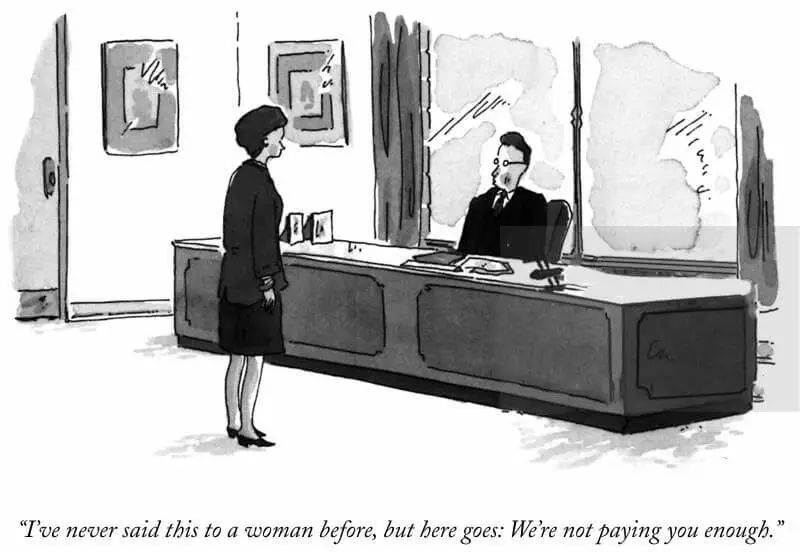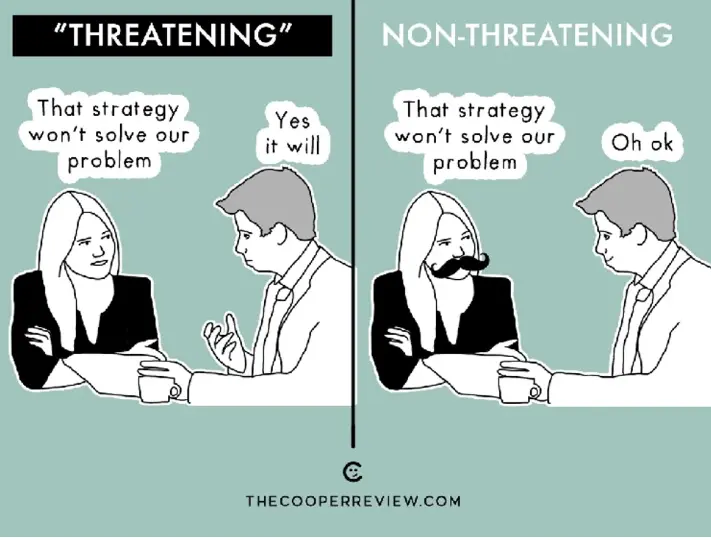Auf dieser Seite
Wir wissen, warum Frauen großartige Führungskräfte sind: Sie zeichnen sich durch den Aufbau einer zweckorientierten Organisation aus. Die Frage ist, ob Sie sie genug anziehen, motivieren und engagieren.

Ereignis 1: Bedarf an weiblicher Alpha-Führung
Von unberechenbaren Volkswirtschaften über den Wirbel neuer Technologien und das wachsende Misstrauen zwischen Institutionen bis hin zu den Arbeitskräften der Jahrtausendwende und dem Klimawandel - von den Alpha-Frauen unter den Führungskräften von heute wird erwartet, dass sie sich mit diesen komplexen Themen auseinandersetzen und Frauen ermutigen, sie zu führen.
Wie kann man in einer sich rasch entwickelnden Welt eine besser abgestimmte und engagierte Belegschaft aufbauen? Wie können Frauen eine wichtige Rolle bei der Bewältigung solcher Herausforderungen spielen?
At Fortune’s August 2019 Business Roundtable, it was universally acknowledged that the best chance a company has of surviving and growing in these times of turmoil is to have a clear sense of purpose - the WHY - for its workforce.
Veranstaltung 2: Die Wissenschaft dahinter
Eine Marktstudie zeigt, dass Teams und Organisationen mit einem Frauenanteil von mindestens 50 % in Führungspositionen Mitarbeiter haben, die nicht nur eine größere Klarheit über den Auftrag, die Strategie und den Zweck ihres Unternehmens haben, sondern sich auch mehr davon inspirieren lassen. Diese beiden Ereignisse sind nicht voneinander zu trennen. Und wenn Sie gerade erst die Verbindung zwischen "Frauen" und "Zweck am Arbeitsplatz" hergestellt haben, sind Sie zu spät dran.
Immer mehr Arbeitsplätze und Unternehmen fordern eine stärkere Vertretung von Frauen an der Spitze - wobei Frauen im Vergleich zu ihren männlichen Kollegen nicht nur zahlenmäßig unterlegen, sondern auch weniger "engagiert" sind.
The data checks out. Every day, more and more studies confirm that businesses with women in decision-making and critical roles are outperforming – not just preceding- the companies where men occupy analogous seats.
Laut dieser Harris-Umfrage würde heute fast die Hälfte der Amerikaner gerne für ein von Frauen geführtes Unternehmen arbeiten, wenn sie die Wahl hätten.
Fortune-500-Unternehmen (mit einem überwiegenden Anteil an weiblichen CXOs) erzielten eine fast dreifache Rendite im Vergleich zu den im S&P 500 gelisteten Unternehmen (die überwiegend von Männern geführt werden). Und warum? Den meisten Befragten in einigen dieser Umfragen zufolge sind diese Unternehmen stärker "zweckorientiert" - der Gipfel der Flower Power und der Führungsrolle von Frauen.
Zurück zu Purpose - der geheimen Soße also. Was also macht Frauen im Unternehmenskontext zielstrebiger?
Einige der wesentlichen Unterschiede sind biologischer Natur. Der erste hat seinen Ursprung in der oberen Etage.
Ja, trotz des Unisex-Gehirns werden Frauen und Männer im Großen und Ganzen mit Gehirnen geboren, die erhebliche strukturelle (und damit auch funktionelle) Unterschiede aufweisen. Hier ist die Kurzfassung.
In den Gehirnen von Männern gibt es mehr graue Zellen. Dadurch sind Männer bei der Arbeit gut in den "grauen Zellen", wie dem Verarbeiten von Konzepten und dem Lösen von Problemen. Die Gehirne von Frauen haben dagegen mehr weiße Zellen.
The purpose of white cells is – amongst other things - to network, harness, and synergize processing and problem-solving tools (grey cells) in the brain. In other words, to supervise, orchestrate, and manage tasks. In the workplace, women are better at connecting, communicating, and mobilizing all moving parts, including emotions.

Der andere Unterschied ist Oxytocin. Oxytocin, ein Hormon und Neurotransmitter, der im Hypothalamus produziert wird, beeinflusst nachweislich unser Sozialverhalten. Oxytocin wird auch als "Umarmungshormon" bezeichnet und erzeugt "Vertrauen". Vertrauen ist eine wichtige Voraussetzung für die Schaffung eines Ökosystems des Vertrauens, der Sicherheit und des Zusammenhalts in einem Team, das uns kreativer, produktiver und glücklicher macht. Frauen produzieren mehr Oxytocin als Männer, was bedeutet, dass Arbeitsplätze, die Frauen fördern, von Natur aus "Great Places to Work" sind.
Schließlich gibt es Untersuchungen im Bereich des Neuroimaging, die darauf hindeuten, dass Frauen ihre Spiegelneuronen bei der Verarbeitung von Emotionen stärker einsetzen als Männer. Die wichtigste KRA eines Spiegelneurons besteht, wie der Name schon sagt, darin, den Gefühlen anderer einen Spiegel vorzuhalten, der es dem Einzelnen ermöglicht, sich in die Lage anderer zu versetzen.
Dies führt zu Qualitäten wie Verständnis (ein starker Einflussfaktor für Integration und Vielfalt), Sensibilität und Einfühlungsvermögen am Arbeitsplatz. Sie können den Artikel von Lowri Dowthwaite zu diesem Thema hier nachlesen. In einer Studie haben Frauen diese "Superkräfte" genutzt, um etwas spektakulär gut zu machen (viel besser als Männer):
Bringen Sie Ihre Mitarbeiter dazu, wirklich an den Unternehmenszweck zu glauben.
Übrigens haben sie damit den "Heiligen Gral" der modernen Unternehmen erreicht.

Wie haben sie das geschafft? Ihre Spiegelneuronen halfen den Frauen, mit ihren Mitarbeitern auf einer persönlichen Ebene in Kontakt zu treten. Ihre grauen Zellen halfen den Frauen, sich zu vernetzen und alle auf einer gemeinsamen Basis zu mobilisieren. Und als sie schließlich das Unternehmensziel verkündeten, sorgte die Magie des Oxytocins nicht nur dafür, dass alle aufhorchten und zuhörten, sondern auch dafür, dass sie die Prämisse spontan und von ganzem Herzen akzeptierten.
Dies führte zu erstaunlichen Ergebnissen, wie z. B. einem stärkeren Engagement der Mitarbeiter, einem größeren Glauben an die Unternehmensstrategie, einer stärkeren Beteiligung an der Unternehmensentwicklung und einer größeren Überzeugung von den Produkten und Dienstleistungen des Unternehmens. Der letzte Punkt, der die Mitarbeiter zu einflussreichen Markenbotschaftern machen kann, ist ein Bonus für Ihre Marketingabteilung.)
Das ist das Gold, für das man jedes Jahr Milliarden von Dollar für die Unternehmensführung ausgibt. Stattdessen müssen wir Frauen nur gezielter einbinden und Anreize schaffen. Schaffen Sie für sie einen "Great Place to Work" und einen sinnvolleren Arbeitsplatz. Machen Sie an diesem Frauentag einen entscheidenden Schritt zur Stärkung von Frauen. Wir haben ein exklusives KOSTENLOSES Angebot für leidenschaftliche Manager wie Sie zu diesem schönen Anlass des Frauentags.













